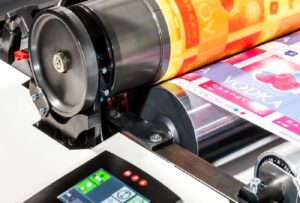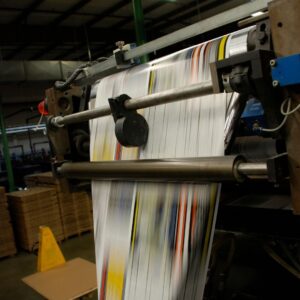Introduction:
Offset printing is a widely used printing technique that produces high-quality prints with excellent color accuracy and sharpness. One of the key components of this printing process is offset printing ink. In this article, we will explore everything you need to know about offset printing ink.
What is Offset Printing Ink?
Offset printing ink is a type of ink that is specifically designed for use in offset printing. This type of ink is made from a combination of pigments, resins, solvents, and other ingredients, which work together to create a high-quality ink that is ideal for use in offset printing.
How Offset Printing Ink Works:
Offset printing works by transferring ink from a printing plate to a rubber blanket, which then transfers the ink to the paper. Offset printing ink is specially formulated to work with this process, allowing for precise color reproduction and sharp, detailed prints.
Types of Offset Printing Ink:
There are several different types of offset printing ink, including:
- Oil-Based Ink: Oil-based ink is the most commonly used type of offset printing ink. It is made from a combination of pigments, oils, and other ingredients, which work together to create a high-quality ink that is ideal for use in offset printing.
- Water-Based Ink: Water-based ink is an alternative to oil-based ink. It is made from a combination of water, pigments, and other ingredients, which work together to create a high-quality ink that is ideal for use in offset printing.
- UV Ink: UV ink is a type of ink that is cured with UV light. It is ideal for use in printing on non-porous materials, such as plastic or metal.
Choosing the Right Offset Printing Ink:
When choosing the right offset printing ink for your needs, there are several factors to consider, including:
- Color Accuracy: Make sure the ink you choose has excellent color accuracy, so your prints come out looking crisp and clear.
- Drying Time: Consider the drying time of the ink, as this can affect your printing process.
- Compatibility: Make sure the ink you choose is compatible with your printing press and the paper you will be using.
- Environmental Impact: Consider the environmental impact of the ink, and choose an eco-friendly option if possible.
Composition of Offset Printing Ink:
Offset printing ink is typically composed of several key ingredients, including:
- Pigments: These are the colorants that give the ink its color. Pigments are finely ground particles that are suspended in the ink.
- Resins: Resins help the ink adhere to the printing surface and also provide gloss and durability.
- Solvents: Solvents help to dissolve the other ingredients in the ink and control its viscosity.
- Additives: Additives are used to modify the ink’s properties and improve its performance. For example, additives can be used to improve drying time, reduce smudging, or enhance color intensity.
Printing Surface:
Offset printing ink is designed to be used on a variety of printing surfaces, including paper, cardboard, plastic, and metal. The ink must be carefully formulated to work with each type of surface, as different surfaces require different ink properties to achieve optimal results.
Printing Presses:
Offset printing ink can be used with a variety of printing presses, including sheet-fed and web-fed presses. The ink must be carefully matched to the printing press to ensure that it performs correctly and produces high-quality prints.
Environmental Impact:
Offset printing ink can have a significant environmental impact, as it often contains volatile organic compounds (VOCs) and other harmful chemicals. However, many ink manufacturers are now offering eco-friendly offset printing ink options that are formulated to be low in VOCs and other harmful chemicals.
Conclusion:
Offset printing ink is an essential component of the offset printing process. By understanding the different types of ink available and considering the factors that go into choosing the right ink for your needs, you can ensure that your prints come out looking their best. Whether you are printing brochures, flyers, or other marketing materials, the right offset printing ink can make all the difference.









